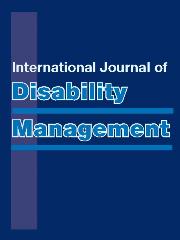Article contents
Barriers to Psychologists’ Adherence to Evidence-Based Practice Guidelines for Treating Musculoskeletal Injuries Within the State Insurance Regulatory Authority Compensation Schemes
Published online by Cambridge University Press: 05 August 2019
Abstract
The use of evidence-based practice (EBP) guidelines by psychologists working within the State Insurance Regulatory Authority (SIRA) compensation schemes for treating musculoskeletal injuries has been found to vary. The aim of this study was to qualitatively explore psychologists’ perceived barriers to adhering with EBP guidelines implemented by the New South Wales (NSW) SIRA.
Registered psychologists (n = 20) working within the NSW SIRA compensation schemes participated in four focus groups conducted face-to-face (F2F) and online. Participants’ responses were audiotaped, transcribed verbatim and entered into NVivo 11 software. Text data were analysed to identify recurrent themes within and across groups (metropolitan, regional and rural).
Thematic analysis revealed three key issues: (a) a lack of trust in the validity of the recommended EBP guidelines; (b) lack of knowledge of the psychologist’s role in this context and insufficient skills to fully apply the guidelines, protocols and procedures; and (c) a poor fit between EBP guidelines, client presentations and circumstances, and the SIRA compensation schemes.
The findings showed that both individual practitioner variables and contextual barriers influenced adherence to EBP. Practical implications for future research include generating recommendations to overcome the identified barriers using a collaborative approach between policymakers, researchers and practitioners.
Keywords
- Type
- Article
- Information
- Copyright
- © The Author(s) 2019
References
- 3
- Cited by


